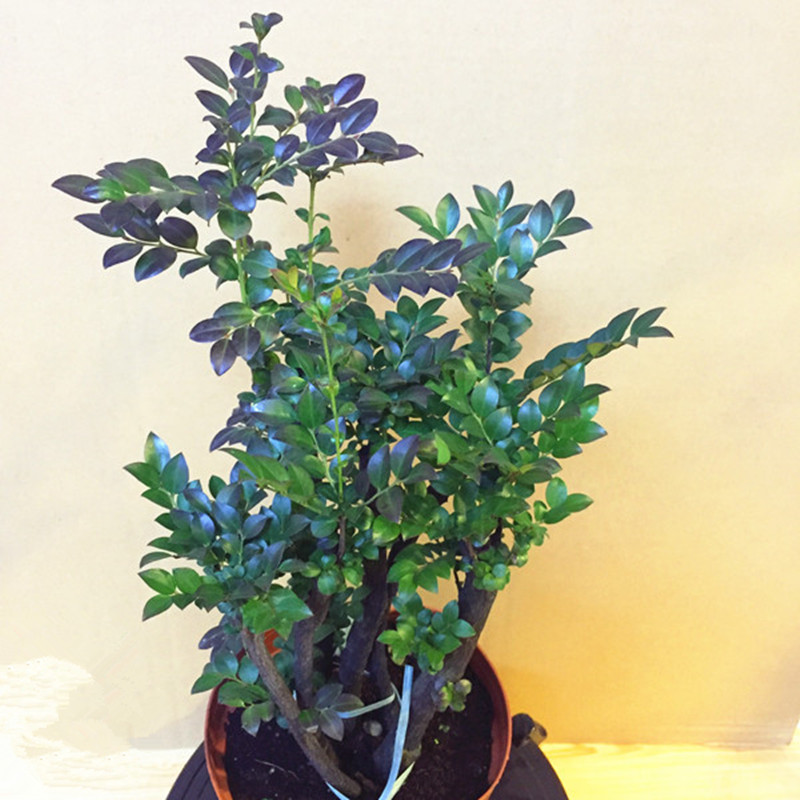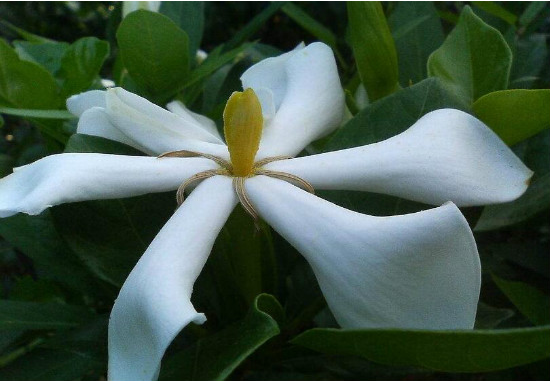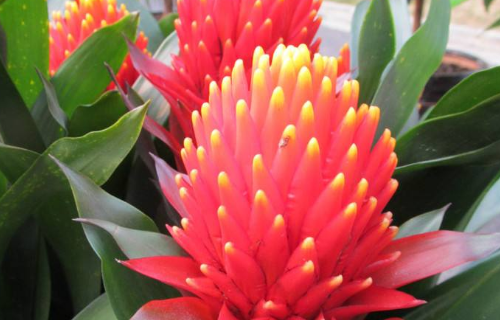The value of lobular red sandalwood bonsai
Lobular red sandalwood is the raw material of mahogany furniture and belongs to scarce resources. Many people will invest in planting lobular red sandalwood. The mature lobular red sandalwood has a remarkable reputation and has a very high market valuation. As a flower lover, if only to watch lobular red sandalwood, it is also a well-deserved first choice. Lobular red sandalwood belongs to one of many tree species, the leaves are verdant and dense, and the feeling of spring is very obvious. Give people a suddenly enlightened state of mind.

Have you learned how to deal with the leafy red sandalwood bonsai with fallen leaves? If your lobular red sandalwood has lost its leaves, please deal with it in time. We cherish our plants, and the plants will repay you with their beauty.
The aristocracy in bonsai, cliff cypress bonsai, boxwood bonsai, lobular red sandalwood bonsai
Flower Bonsai Network Guide: today, the editor of Flower Bonsai Network is to share with you the articles about the aristocracy of bonsai, cliff cypress bonsai, yellow poplar bonsai, lobular red sandalwood bonsai. Let's take a look.
Sabina vulgaris bonsai
When it comes to collection, people usually think of traditional collections such as calligraphy and painting, antiques and jade, but they do not realize that plants can also be collected. In recent years, with the popularity of wooden handstrings, some literary lovers have found their own way to include bonsai native plants in the collection category. The so-called "Wen play bonsai" is used to do hand strings of cliff cypress, boxwood, lobular red sandalwood, yew and other plants, most of which are expensive. Collection should be cautious, because they are different from wooden bracelets and need suitable growth environment and professional daily care, otherwise they are easy to die and bring greater economic losses to collectors.
Sabina vulgaris bonsai
In fact, bonsai is different from other collectibles in that it pays more attention to art. From the point of view of a bonsai lover, trees should be big or small, high or low, as long as you like them, and do not blindly follow the trend. After all, the fun that bonsai brings to collectors is the most important. Of course, if economic conditions permit, you might as well play with these so-called "literary bonsai", because they are really beautiful. Let's go and enjoy them with the editor.
one
Sabina vulgaris bonsai
Sabina vulgaris is a kind of all-natural plant, which can not be cultivated and planted artificially, has a small quantity and is non-renewable. In particular, the number of cypress growing on the cliffs is relatively small. Light brown cypress, commonly known as "old material", after hundreds of years of wind and sun, the smell is stable, the aroma smells very comfortable. The market price is more than ten thousand yuan. Cliff cypress bonsai is more rare than root carvings. first of all, it is more difficult to dig down from the cliff. If you dig it out from the cracks in the stone, there are very few beard roots, and it is even more difficult to transplant it. There is a saying that "live one tree, earn a car."
two
Boxwood bonsai
Like the cypress, boxwood bonsai can also be called "aristocratic". A boxwood with a diameter of 10 centimeters takes about 150 years to grow, which determines its "aristocratic" status. There is no shortage of fine works in Huangyang Mountain pile, especially Pearl Huangyang. Pearl yellow poplar has settled in alpine ridges or stone crevices for generations, and has been severely honed by wind, frost, ice and snow, making it naturally grow into Qiu branches and branches, strange and colorful trees.
three
Lobular red sandalwood bonsai
Lobular sandalwood is the boutique of red sandalwood, usually referred to as "red sandalwood", with high density and small brown eyes. it is mainly produced in tropical and subtropical primeval forests, and Indian red sandalwood is the best. Mainly in Mysore, other types of sandalwood are classified as grass flowers and pears. As the saying goes, ten sandalwood nine empty, the largest red sandalwood diameter is only about 20 centimeters, its precious degree can be imagined.
four
Yew bonsai
Taxus is an ancient tree species with a history of one hundred years. It has been cultivated for a long time in China. Because of its beautiful plant shape and thick green leaves, it is used to make bonsai. Taxus has very strong medicinal value, which can extract paclitaxel. It is internationally recognized as an anti-cancer and anti-cancer drug, and it is a national first-class protected tree species. It gets its name because the red bean of the yew grows the same fruit as the red bean.
Bonsai old pile black bone incense tree pile bonsai red sandalwood black bone tea
Flower bonsai net guide: today the flower bonsai net editor shares for you the article about bonsai old pile black bone fragrance, tree stump red sandalwood black bone tea, let's take a look.
Tree stump bonsai red sandalwood black bone tea
Black bone incense is a variety of Fenggang persimmon, also known as black bone tea, some people call it lobular red sandalwood. The bonsai made of black bone tea is of high-end atmosphere and has good collection value.
Red sandalwood bonsai tree stump black bone incense belt basin
The growth rate of black bone tea is very slow, and shaped big tree-shaped works often appear in bonsai magazines in Taiwan. Although the name is not as high-end as lobular red sandalwood, it is really better than lobular red sandalwood as a bonsai.
Potted red sandalwood black bone tea with tree seedlings
Black bone incense is mainly to observe the leaves of the bonsai tree species, its leaves are relatively small, evergreen, its bark and roots are black, and its wood is also very hard.
Potted black bone tea planted with red sandalwood stakes
Black bone tea is also one of the slowest growing tree species in Lingnan bonsai, so special attention should be paid to selecting stumps with receptacles or preferably young branches.
Bonsai tree stump black sandalwood black bone tea
The sprouting power of black bone tea is very strong and the root is fast, it can sprout after a few days, and the new root can be seen in 60 days, so its survival rate is very high.
Red sandalwood stump bonsai black bone incense
The root system of black bone tea likes fertilizer very much when it grows up, just apply rotten farm manure on the basin surface, so that its nutrients can be slowly dissolved every time it is drenched in water, which is more conducive to the absorption of tree stumps.
Office stump potted black sandalwood
Black bone tea can sprout new shoots every quarter, pruning can be moved all the year round, and each pruning can only be carried out after the new shoots are ripe, with spring and autumn as the best.
Potted black bone tea planted with red sandalwood stakes
When pouring water on the bonsai of black bone tea, we must achieve the principle of being dry and wet, not dry and wet, and must be drenched through. After Lesser Snow, we should stop fertilizing, and do not have the phenomenon of slow growth because of the shortage of fat and water.
- Prev

Matters needing attention in the cultivation of Gardenia jasminoides
1. Pay attention to avoid yellowing of leaves. Light is a very important factor in the growth of Fructus Gardeniae. The light is suitable in the spring and autumn season, and you can receive direct sunlight outside. When it is hot in summer, when the sun is strong, you can make a shade to block out the sun. And in winter,
- Next

How to raise Torch Flower
Torch flowers in soil are mostly cultivated in open field or potted. When potted plants should be selected in the lee. Before planting, the soil should be deeply ploughed and organic fertilizer should be applied. Potting requires sandy loam with deep soil layer, fertile soil and good drainage. Light Torchflowers love warm, sunny environments
Related
- Fuxing push coffee new agricultural production and marketing class: lack of small-scale processing plants
- Jujube rice field leisure farm deep ploughing Yilan for five years to create a space for organic food and play
- Nongyu Farm-A trial of organic papaya for brave women with advanced technology
- Four points for attention in the prevention and control of diseases and insect pests of edible fungi
- How to add nutrient solution to Edible Fungi
- Is there any good way to control edible fungus mites?
- Open Inoculation Technology of Edible Fungi
- Is there any clever way to use fertilizer for edible fungus in winter?
- What agents are used to kill the pathogens of edible fungi in the mushroom shed?
- Rapid drying of Edible Fungi

